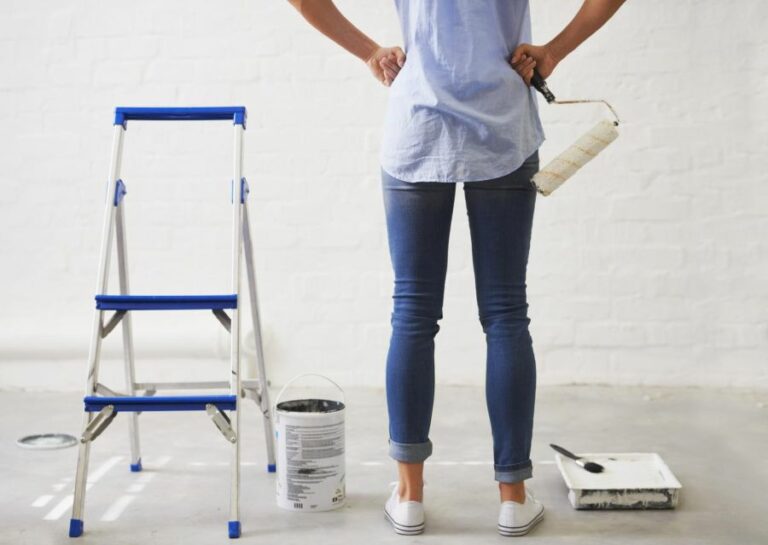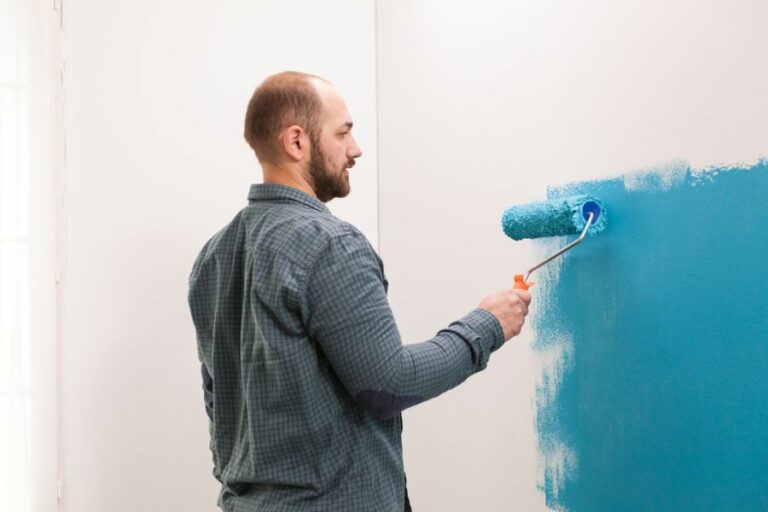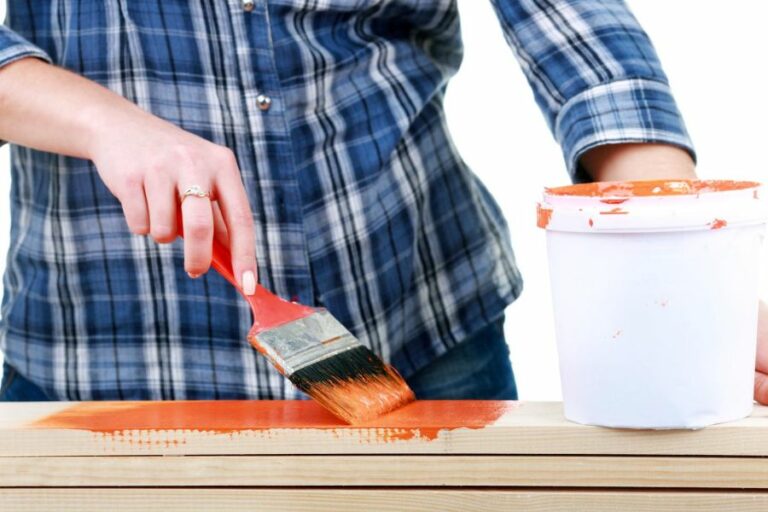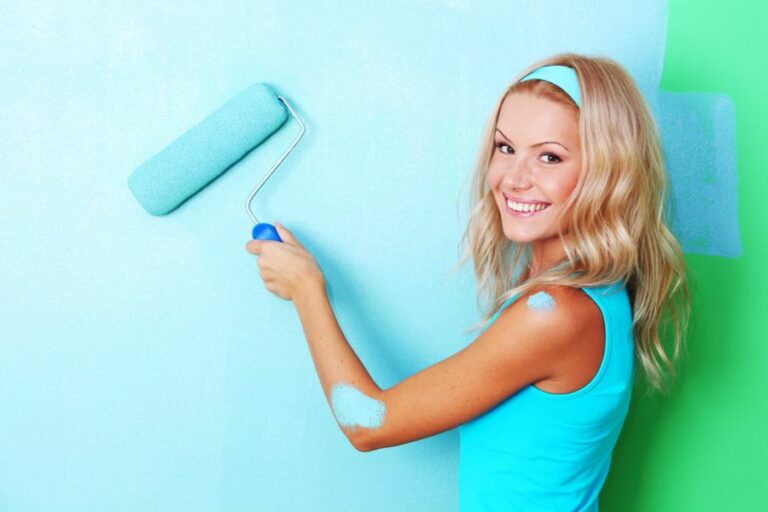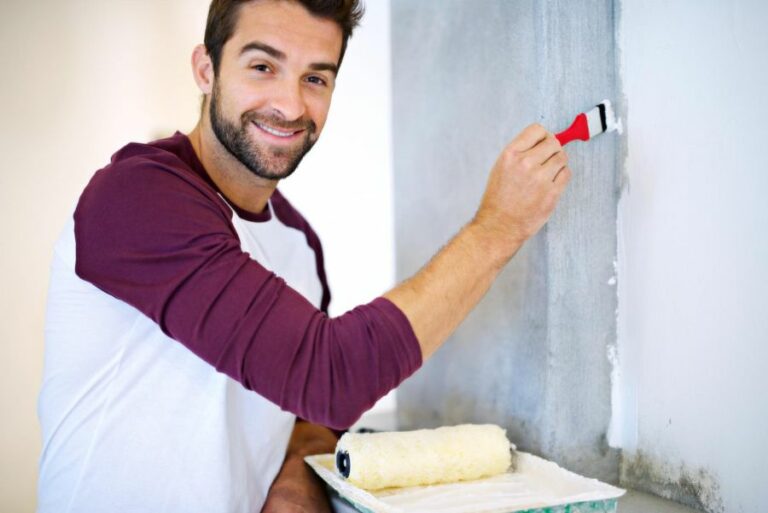Water-Resistant Options For Indoor Wall Paint, What Pros Say
Are you tired of mold and moisture ruining your beautiful walls? Look no further! I have the ultimate water-resistant paint options to transform your walls into a moisture-free haven. Trust me as I guide you toward choosing the best solution for your indoor spaces, giving them a longer-lasting and fresh look.
Water-resistant options for indoor wall paint:>
Water-resistant indoor wall paint options include latex, acrylic, and oil-based paint. Latex-based paint, such as Behr Ultra Scuff Defense, offers durability and easy maintenance, while acrylic paint, like Sherwin-Williams Duration Home, provides versatility and moisture resistance. Oil-based paint, such as Benjamin Moore Advance, is water-resistant but less eco-friendly due to high VOCs. Proper application and maintenance are crucial for effective protection against water damage.

Discover top-performing water-resistant paints designed to protect your walls from moisture damage, mold, and mildew. Delve deeper into helpful tips on paint selection, best practices for application, and how to maintain the pristine look of your freshly painted interior walls.
Keep reading for expert advice that makes a splash in wall protection!
Contents
- 1 Indoor Wall Paint: Water-Resistant Options Explored
- 2 Top-Rated Waterproof Interior Wall Paints Compared
- 3 The Reality of Waterproof Paint: Does It Exist?
- 4 Identifying Quality Waterproof Paint Brands
- 5 Examining the Waterproof Nature of Indoor Latex Paint
Indoor Wall Paint: Water-Resistant Options Explored
• The Importance of Water-Resistant Paint
Water damage is a common issue in homes, especially in areas with high humidity or exposure to water, such as kitchens, bathrooms, basements, and laundry rooms.
This damage can be costly and time-consuming to repair, so it is essential to consider water-resistant options when choosing paint for your walls.
In addition to protecting your walls from water and moisture, these paints can also help prevent the growth of mold and mildew, ensuring that your home stays clean and healthy.
• Types of Water Resistant Paints
– Latex-Based Paints
One of the most popular and versatile water-resistant paint options is latex-based paint. Latex paints are known for their excellent durability, making them suitable for most indoor wall surfaces.
They are also easy to clean and maintain, making them perfect for areas exposed to moisture or high humidity, such as bathrooms and kitchens.
An example of a great latex-based paint is the BEHR ULTRA SCUFF DEFENSE Interior Extra Durable Flat Paint & Primer, which offers washability, durability, and advanced scuff resistance due to its Nanoguard technology.
– Acrylic Paints
Another excellent water-resistant paint option is acrylic paint. Acrylic paints are known for their versatility, as they can be mixed with water or various mediums to create different textures and finishes.
These paints are also highly resistant to moisture, making them ideal for rooms with high humidity or that are prone to water damage.
A popular choice for acrylic paint is the Sherwin-Williams Duration Home Interior Paint.
– Oil-Based Paints
Though less common than latex or acrylic paints, oil-based paints can also be water-resistant. However, they are more challenging to work with, as they require longer drying times and proper ventilation due to their strong fumes.
Additionally, oil-based paints are not as eco-friendly as other paint options due to their high level of volatile organic compounds (VOCs). Nonetheless, they can provide a long-lasting, durable finish in areas prone to water damage.
One popular oil-based paint is the Benjamin Moore ADVANCE Interior Paint.
• Tips for Applying Water Resistant Paint
- Surface Preparation: Before applying paint, it is crucial to ensure that the surface is clean, dry, and free of any dirt or debris, as this can cause the paint not to adhere properly. If the existing paint is peeling or chipping, it should be removed with a scraper or sandpaper.
- Priming: For best results, it’s recommended to apply a primer specifically formulated for water-resistant paints to ensure proper adhesion.
- Applying the Paint: Use a brush, roller, or paint sprayer to apply the paint evenly on the wall. Ensure that the paint is spread uniformly, as this will help improve the water-resistant properties.
- Additional Coats: Apply at least two coats of water-resistant paint to ensure maximum protection against water damage. Waiting for the recommended drying time between each coat to achieve the best results is crucial.
• Maintenance
Proper maintenance is essential to ensure that your water-resistant paint remains effective. Regularly clean your walls with a damp cloth and mild detergent to remove any dirt or stains.
Additionally, routinely inspect your walls for any signs of water damage, such as peeling or blistering paint, and address these issues immediately to prevent further problems.
In conclusion, investing in water-resistant paint for your indoor walls is a wise decision, as it can effectively protect your home against water damage, mold, and mildew.
By choosing latex, acrylic, or oil-based water-resistant paints and following proper application and maintenance tips, you can ensure that your home stays protected and looks its best.
For further guidance, consult resources from reputable organizations such as EPA to help maintain a healthy living environment.
Top-Rated Waterproof Interior Wall Paints Compared
Are you considering painting the interior of your home and want to ensure that you choose long-lasting, waterproof paint? I will help you understand the importance of waterproof paint, its various features and types, and which one is the best choice for your interior walls. Let’s begin.
• Why Choose Waterproof Paint for Interior Walls?
Waterproof paint is a must-have, especially if you live in an area with high humidity, constant dampness, or regular exposure to water, such as a bathroom or basement. It prevents the growth of mold and mildew, which can lead to health risks and structural damage.
Moreover, waterproof paint provides durable and long-lasting protection, ensuring your walls remain clean and appealing for a long time.
– Identifying Your Needs
Before diving into the best waterproof paint options, it’s essential to identify your specific needs. Consider the environment, humidity levels, and the purpose of the space you plan to paint.
This information will help you decide on the type of paint that will work best for your interior walls.
• Key Features of Waterproof Paint
Waterproof paint comes with several critical features that make it an excellent choice for interior walls.
– Moisture Resistance
The primary purpose of waterproof paint is to provide a water-resistant barrier, preventing water ingress and protecting the wall from dampness and moisture.
– Mold and Mildew Resistance
High-quality waterproof paint resists the growth of mold and mildew, protecting your walls from unsightly stains and potential health hazards.
– Durability
Waterproof paint is designed to withstand harsh conditions and provide long-lasting protection against peeling, flaking, and disintegration.
– Easy Application
Many waterproof paints are formulated for easy application, ensuring a hassle-free painting experience.
• Types of Waterproof Paint for Interior Walls
There are various types of waterproof paint available on the market. Here, we’ll explore the most popular options and their benefits.
– Acrylic Paint
Acrylic paint is a versatile, water-based option that is suitable for a wide range of surfaces. It provides excellent adhesion and is resistant to moisture, cracking, and yellowing. Additionally, acrylic paint dries quickly and is easy to clean.
– Elastomeric Paint
Elastomeric paint is a unique, high-performance waterproof paint designed to provide a flexible, durable, and water-resistant coating. This paint adheres well to masonry, concrete, stucco, and brick surfaces. Its elasticity allows it to expand and contract with the wall, preventing the development of cracks and leaks.
– Epoxy Paint
Epoxy paint is a tough, chemical-resistant paint that forms a solid, waterproof barrier. It adheres exceptionally well to a variety of surfaces, including concrete and metal. Epoxy paint is known for its durability, making it ideal for high-moisture areas such as basements or garages.
– Latex Paint
Latex paint is a popular water-based paint option that is easy to apply and clean up. It dries quickly and is relatively low in odor compared to other paint types. Latex paint is resistant to mildew, making it suitable for humid environments.
• Recommended Waterproof Paints for Interior Walls
Below are three highly recommended waterproof paint options for interior walls:
- Rust-Oleum Watertite Mold & Mildew-Proof Waterproofing Paint: This paint is specifically formulated to provide a watertight seal, prevent mold and mildew growth, and resist up to 34 pounds of water pressure. It’s an excellent choice for basements, bathrooms, and other interior areas prone to moisture.
- BEHR Premium Plus Ultra Interior Paint & Primer in One: This all-in-one acrylic latex solution provides exceptional durability and a mildew-resistant finish. It’s suitable for high-moisture areas such as bathrooms and laundry rooms.
- Zinsser Perma-White Mold & Mildew-Proof Interior Paint: This paint is specially formulated to resist mold and mildew growth. It’s durable, washable, and perfect for humid conditions, such as bathrooms and kitchens.
• Final Thoughts
When choosing the best waterproof paint for your interior walls, it’s crucial to consider the environment, humidity levels, and needs of the specific area. Waterproof paint provides a durable, long-lasting finish and protects your walls against moisture, mold, and mildew.
By selecting the appropriate waterproof paint for your walls, you can ensure a clean, appealing, and long-lasting appearance for your home. For more information on waterproofing techniques and building materials, visit the U.S. Department of Energy’s website here.
The Reality of Waterproof Paint: Does It Exist?
Waterproof paint is a popular term, often sought after by homeowners and professionals alike, to protect surfaces from moisture, mold, and mildew. But does it really exist, or is it just a marketing gimmick?
• What Is Waterproof Paint?
Waterproof paint is a type of paint specifically designed to prevent the absorption of water or liquids by forming an impenetrable barrier on the surface it’s applied to.
It’s composed of water-resistant substances, such as latex or acrylic, as well as an additive called a hydrophobic agent, which repels water molecules.
However, it is important to understand that no paint is 100% waterproof. Waterproof paint does offer a higher level of protection against moisture than conventional paint, but it is not entirely impervious to water.
• Types of Waterproof Paint
There are various types of waterproof paint, each with its own unique properties and applications. The most common types include:
– Acrylic Paint
Acrylic paint is a water-based paint made from acrylic polymers. It is easy to work with, dries relatively quickly, and has good water-resistant properties. It’s an excellent choice for indoor and outdoor use and can be applied to a variety of surfaces.
– Cement-Based Paint
Cement-based paint is composed of Portland cement, sand, and other additives that give it exceptional waterproofing capabilities. Primarily used for exterior surfaces like concrete and masonry, cement-based paint creates a durable coating that is tough and resistant to water and moisture.
– Waterproofing Paint for Basements and Masonry
Basements and masonry surfaces are particularly susceptible to moisture infiltration. Using specialized waterproofing paint can help prevent water infiltration and subsequent damage in these situations.
Waterproofing paint for basements and masonry surfaces typically contains ingredients such as latex and mineral spirits, which create a flexible, water-resistant barrier.
• Applications for Waterproof Paint
Waterproof paint can be used in a variety of applications, including:
– Interior Walls
In areas prone to moisture, such as bathrooms, kitchens, and laundry rooms, waterproof paint can help prevent mold and mildew. Acrylic paint is often the preferred choice for these areas, as it offers good water resistance and is easy to clean.
– Exterior Surfaces
Exterior surfaces, such as wood siding, concrete, and brick, can benefit from the use of waterproof paint. It helps protect the surface against water damage and prolongs the life of the material. Cement-based paint is ideal for these applications, as it forms a durable, water-resistant barrier.
– Basements and Masonry Surfaces
Waterproof paint should be used on basement walls, foundation walls, and other masonry surfaces to prevent water infiltration. Waterproofing paint is specifically designed for these applications and can be effective in sealing potential water entry points.
– Wood Surfaces
Wood is susceptible to water damage and can rot if not properly sealed. Acrylic-based waterproof paint can help protect wood surfaces from moisture and keep them looking good for longer.
• How Effective Is Waterproof Paint?
As mentioned earlier, no paint is 100% waterproof. However, waterproof paint does provide a higher level of protection against moisture than traditional paint. When applied correctly, waterproof paint can help prevent water infiltration, mold, and mildew growth, and damage to the surface it’s applied to.
It is crucial to follow the manufacturer’s instructions when applying waterproof paint, as poor application can compromise its water-resistant properties.
• Tips for Using Waterproof Paint
Here are some essential tips to follow when using waterproof paint:
- Prepare the surface: Thoroughly clean and dry the surface before applying waterproof paint. In some cases, it may be necessary to patch or repair existing damage first.
- Use the right paint for your needs: Choose the best type of waterproof paint for your specific application. For example, use cement-based paint for exterior surfaces and acrylic paint for interior walls.
- Apply multiple coats: For best results, apply at least two coats of paint or follow the manufacturer’s recommendations for the number of coats required.
- Proper dry time: Allow the paint to dry completely between coats and before exposing it to water. Rushing the drying process could compromise the paint’s water resistance.
- Maintenance: Regularly inspect and maintain painted surfaces to ensure the waterproof coating remains effective.
In conclusion, while no paint is 100% waterproof, waterproof paint does exist and can be an effective solution for protecting your home from water and moisture damage. Choose the appropriate type for your needs, apply it correctly, and maintain the painted surfaces for lasting results.
For more information on waterproof paint, visit the EPA’s guidelines on indoor air quality to better understand how to manage moisture in your home.
Identifying Quality Waterproof Paint Brands
Waterproof paint is a specialized type of paint designed to create an impenetrable barrier against water, moisture, and dampness.
These paints are widely used in various applications, such as protecting your home’s exterior and interior surfaces, preserving the durability of concrete structures, and preventing mold and mildew growth.
• Properties of Waterproof Paint
Waterproof paint consists of a unique formulation designed to repel water and provide a sturdy barrier against moisture penetration. Some essential properties of waterproof paints include:
– Resistance to Water
As the name suggests, waterproof paints exhibit an excellent ability to repel water. They form a tight bond with the surface they are applied on, thereby preventing water absorption and wicking. This attribute is essential in protecting surfaces from damage and decay due to moisture.
– Mold and Mildew Resistance
Since waterproof paints prevent moisture build-up, they discourage the growth of molds and mildews, which thrive in damp conditions. This feature contributes to a healthy and safe living environment.
– Durability
Waterproof paints are renowned for their strong adhesion and long-lasting protection. They resist chipping, peeling, and cracking even under extreme weather conditions, offering prolonged protection to surfaces against water damage.
– Breathable
Though waterproof paints offer robust resistance against water penetration, they remain breathable, allowing trapped moisture to escape slowly. This feature ensures that the painted surfaces don’t suffer from moisture-related issues such as blisters or peeling.
• Types of Waterproof Paint
Waterproof paints are available in various formulations, each designed to cater to specific surfaces and requirements. The most common types include:
– Acrylic Waterproof Coatings
Acrylic waterproof coatings are water-based paints with excellent adhesion, flexibility, and UV resistance. They are easy to apply, fast-drying, and provide a smooth, breathable surface. They are suitable for both interior and exterior surfaces, including concrete, masonry, and drywall.
– Elastomeric Waterproof Paints
Elastomeric waterproof paints are made of high-quality elastomeric resins, which make them highly elastic and flexible. Because of their ability to expand and contract with temperature fluctuations, they provide superior protection against cracks and water penetration.
They are ideal for exterior surfaces like stucco, masonry, and concrete.
– Epoxy Waterproof Paints
Epoxy waterproof paints offer excellent adhesion and chemical resistance. They are typically used for protecting concrete and metal surfaces in industrial settings, basements, and garages. They create a hard, impermeable finish that resists water damage, mold growth, and chemical spills.
– Cementitious Waterproof Coatings
Cementitious waterproof coatings consist of cement, sand, and polymers. They provide a dense, hard, and water-resistant surface suitable for concrete, masonry, and brick surfaces.
They are an ideal choice for areas that are prone to excessive water exposure, such as basements, retaining walls, and swimming pools.
• Applications of Waterproof Paint
Waterproof paint is highly versatile and can be used in a range of applications, including:
- Exterior walls to protect against rainwater, moisture, and dampness
- Basements and cellars to prevent water seepage and mold growth
- Bathrooms, kitchens, and laundry rooms to protect against high humidity and moisture
- Concrete structures, such as foundations, retaining walls, and swimming pools
- Roof surfaces to resist water damage and leaking
• Factors to Consider When Choosing Waterproof Paint
Selecting the right waterproof paint for your needs relies on various factors:
– Surface Material
Choose a waterproof paint that is specifically formulated for the surface material you intend to protect. For example, elastomeric paint works well on masonry and stucco, while epoxy paint is ideal for concrete and metal surfaces.
– Performance Requirements
Consider the performance expectations from the waterproof paint, such as resistance to UV, chemicals, abrasion, and temperature fluctuations. The choice of paint should be based on your project’s specific conditions.
– Ease of Application
Some waterproof paints require specific application techniques, such as spray or trowel, and therefore may demand professional assistance. Choose a paint that is easy to apply and clean up if you plan to undertake a DIY project.
– Aesthetics and Finish
Waterproof paint is available in various colors, sheens, and textures. Select one that aligns with your aesthetic preferences and offers the desired finish.
• In Conclusion
Waterproof paint is essential for protecting surfaces against water, moisture, and dampness, ensuring their structural integrity and longevity.
By understanding the properties, types, applications, and critical factors to consider when selecting waterproof paint, you can make an informed decision and protect your investment in the most effective way.
For more information on waterproof paint and its applications, the American Coatings Association is a valuable resource to explore. This reputable organization can provide expert insights and guidance on selecting the ideal waterproof paint for your needs.
Examining the Waterproof Nature of Indoor Latex Paint
When it comes to selecting paint for your home, one of the essential aspects to consider is its durability, especially its resistance to water.
While exterior paint is often discussed for weather resistance, it’s also indispensable to note that interior paint, specifically latex paint, has its own distinct properties when it comes to waterproofing.
• Interior Latex Paint: An Overview
Interior latex paint is water-based, which is mixed with water to create the desired consistency. Latex paint has become increasingly popular in recent years due to its quick-drying properties, low odor, easy clean-up, and environmentally friendly formula.
It is also highly resistant to wear and tear, making it an ideal choice for high-traffic areas within a home.
Latex paint is made up of four primary components:
- Binder: The binder is the primary agent that holds the paint together and helps it adhere to surfaces. For latex paint, the binder is typically comprised of acrylic, vinyl, or a combination of both.
- Pigment: This component provides the paint with its color and opacity.
- Liquids: Water is used as the liquid component in latex paint, making it easier to apply and clean up.
- Additives: These are additional ingredients that alter the paint’s properties, such as improving its resistance to mildew or enhancing its flow and leveling characteristics.
Given the water-based nature of interior latex paint, it’s natural to wonder about its waterproof qualities.
• Waterproofing Properties of Interior Latex Paint
It is important to note that while interior latex paint is not entirely waterproof, it does possess water-resistant properties to some extent. The binder in latex paint creates a film over the surface being painted, and when it dries, this film acts as a barrier that repels water to a certain degree.
Moreover, high-quality latex paints often contain additives that improve the paint’s water resistance, protecting the painted surfaces from moisture penetration.
A well-applied coat of latex paint can be beneficial in protecting walls and other interior surfaces from minor water exposure, such as condensation or occasional splashes.
However, keep in mind that this water resistance is limited. Interior latex paint is not designed to withstand prolonged exposure to water or excessive moisture, such as in areas with high humidity or where water is consistently present.
Some signs that interior latex paint has succumbed to water damage include:
- Paint discoloration or staining
- Bubbling or blistering of the paint film
- Peeling or flaking
In such cases, additional measures must be taken to protect the surfaces from water damage.
• Recommendations for Increasing Water Resistance
- Choose high-quality latex paint: High-quality paint, which typically contains higher-quality binders and additives, is more likely to provide better water resistance than cheaper, lower-quality alternatives.
- Apply multiple coats: Applying two or more coats of paint will create a stronger, more water-resistant barrier on the surface.
- Proper surface preparation: Ensuring that the surface is clean, dry, and free of any damage, such as cracks or peeling paint, will allow for better paint adhesion and, in turn, increased water resistance.
- Use a separate water-resistant primer: Primers designed specifically for water resistance can help create a more protective barrier, particularly in areas where water exposure is more likely, such as bathrooms, kitchens, or basements. This study by the University of Pennsylvania discusses the importance of primer selection.
- Consider additional protective measures for high-moisture areas: In areas with high potential for water damage, such as bathrooms or kitchens, it may be prudent to consider additional measures, such as installing moisture-resistant drywall or using a specialized moisture-resistant paint formulated for these environments.
• Conclusion: Is Interior Latex Paint Waterproof?
In conclusion, while interior latex paint is not entirely waterproof, it does offer a level of water resistance that can help protect surfaces from minor water exposure.
Choosing high-quality paint, applying multiple coats, and taking the necessary precautions with surface preparation and additional protective measures can enhance the water resistance of interior latex paint.
However, for areas with consistent water exposure or high moisture levels, additional measures may be necessary to protect the surfaces from water damage.

